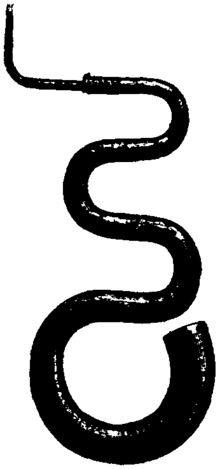Franco-Flemish School
The designation Franco-Flemish School or Netherlandish School refers, somewhat imprecisely, to the style of polyphonic vocal music composition originating from the Burgundian Netherlands in the 15th and 16th centuries, and to the composers who wrote it. The diffusion of their technique, especially after the revolutionary development of printing, produced the first true international style since the unification of Gregorian chant in the 9th century. Franco-Flemish composers mainly wrote sacred music, primarily masses, motets and hymns.
Term
Several generations of Renaissance composers from the region loosely known as the "Low Countries"—i.e. present-day Northern France, Belgium and the Southern Netherlands—are grouped under "Franco-Flemish School", though a teacher-student-relationship between them rarely existed. Most of these musicians were born in the thriving Burgundian provinces of Flanders, Brabant, Hainaut, or Limburg. During periods of political and economic stability, the courts of the Burgundian dukes were a centre of cultural activity in Europe.
Franco-Flemish composers had their origins in ecclesiastical choir schools such as at the cathedrals and collegiate churches of Liège, Tournai, Cambrai, Mons, Antwerp, Bruges, and Gent, although they were famous for working elsewhere. Numerous musicians moved to the European courts in Italy where they were called "I fiamminghi" or Oltremontani ("those from over the Alps") and Spain—notably in the Flemish chapel (capilla flamenca) of the Habsburgs, or to towns in Germany and France, and other parts of Europe—Poland, the Czech lands, Austria, Hungary, England, Sweden, Denmark, Saxony—carrying their styles with them. The exact centres shifted during this time, and by the end of the sixteenth century the focal point of the Western musical world had moved from the Low Countries to Italy.
Development
Following are five groups, or generations, that are sometimes distinguished in the Franco-Flemish/Netherlandish school. Development of this musical style was continuous, and these generations only provide useful reference points.
- The First generation (1420–1450), dominated by Guillaume Dufay, Gilles Binchois and Antoine Busnois; this group of composers is most often known as the Burgundian School. The origins of the style of the first generation embraces both earlier Burgundian traditions and also Italian and English styles. For example, in 1442, the poet Martin le Franc praised Binchois and Dufay for following Dunstaple in adopting the contenance angloise ("English character").
- The Second generation (1450–1485), with Ockeghem as its main exponent, others including Orto, Compère, Prioris, Agricola, Caron, Faugues, Regis and Tinctoris.
- The Third generation (1480–1520): Obrecht, de La Rue, Isaac, Brumel, Févin, Pipelare, Richafort, and most significantly Josquin.
- The Fourth generation (1520–1560): Gombert, Crecquillon, Manchicourt, Arcadelt, Rore, Willaert, Courtois and Clemens non Papa.
- The Fifth generation (1560–1615/20): Lassus, de Monte, Vaet, Regnart, Luython, Wert, de Macque, and Rogier. By this time, many of the composers of polyphonic music were native to Italy and other countries: the Netherlandish style had naturalized on foreign soil, and become a true European style.

The Franco-Flemish motet
Composed between 1450 and 1520, these motets were typically written for four voices, with all voices being equal. They often exhibit thick, dark textures, with an extended low range. The most notable composers of this style include Ockeghem and Josquin, whose De profundis clamavi ad te, composed between 1500 and 1521, provides a good example.
See also
- Category:Franco-Flemish composers
References
- The New Harvard Dictionary of Music.
- A History of Music and Musical Style, by Homer Ulrich & Paul Pisk (1963). New York: Harcourt Brace Jovanoich. ISBN 0-15-537720-5.
- Register of Polyphonists out of The Low countries/the Netherlands born in between 1400-1600
